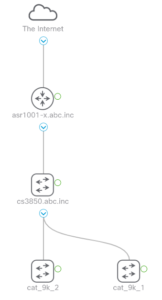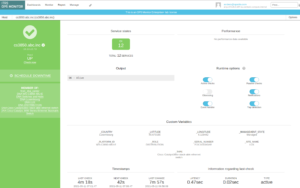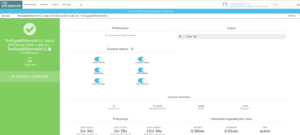Anders Håål – CTO and Founder
Many of our customers today use Cisco Prime to manage their networks. With our automation software Mender they can seamlessly integrate it with OP5 Monitor to get a fully automated monitoring configuration. Lately we have heard that some customers start to talk about moving to Cisco DNA center which is the natural next step if you manage a large Cisco network. Cisco DNA center is Cisco’s next generation platform to manage networks in an intent based manner often referred to as “Next Generation networking”.
So how can Cisco DNA Center be integrated with OP5 Monitor? Well Mender enables integration with any system that provides some sort of API’s and with Cisco DNA Center API’s are a cornerstone of the platform. The challenge is of course what objects in the model of DNA are important to create a Monitor configuration. In DNA Center all objects are identified with a unique UUID identifier.
Sites, Devices, Topology etc. We currently have a small demo that we can show using the Cisco DNA Center sandbox to provide Monitor with automated configuration include rich content based on devices, how they are connected, site location information, groups based on model, type of device, device role etc. With Mender we can automate creation of hosts, services, hostgroups, servicegroups, host dependency and service dependency.
In sandbox there is a small network configuration, with just 4 devices.

The devices are of different models and roles, located on different sites (only one in the sandbox) and devices are connected with interfaces. In the lab we do not want to monitor all interfaces, only the important interfaces that connect the network together. We can of course monitor more interfaces based on attributes.
So how does this look in Monitor?

Four hosts are automatically created representing each device. Looking at the detail page we have a lot of additional information created as custom variables to improve context for the host and enable richer search criterias.

Below we have as an example created services for the interfaces connected to the other devices. These are created in the classical SNMP manner for traffic, status and errors. But we could also have created other services for ospf, crc etc. And with Cisco DNA we could also have created services to use Cisco’s own health scoring for sites and devices.

The above show an example how easy we can enrich the service description to show how the interface is connected to the remote device and interface.
And on the service details we can easily add context for the service, like type of interface, mode of interface etc.

If you are looking at DNA Center and have or plan to use OP5 Monitor, reach out for a short consultation with one of our observability experts and we can show you what we currently have in the lab and how Mender, https://opsdis.com/software/mender/, can help you take the next step to “infrastructure as code” for your Monitor solution.
Author


